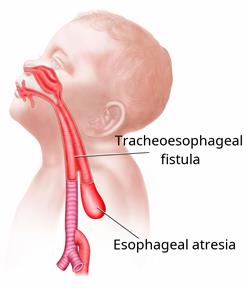ThisisPatientEngagementcontent
Esophageal Atresia Repair
Learn more about our Patient Engagement products now! Turn your patients into active participants in their healthcare by giving them easy access to the same evidence-based information you trust – but delivered in an easy-to-understand format.

Esophageal atresia is a problem that some babies are born with. It happens when the upper part of the esophagus ends in a pouch. The pouch isn't connected to the stomach. When this happens, food can't move from the throat to the stomach like it should. This means babies can't swallow food normally and they need surgery to fix it.
The surgery to fix esophageal atresia will connect the end of the esophagus to the stomach. This may be done during one surgery, but for some babies, more than one surgery will be needed.
Many babies who have esophageal atresia also have a connection between the esophagus and the airway, or trachea. This connection is called a tracheoesophageal (TE) fistula. This fistula is also repaired during the surgery.
These steps may vary. Ask what you can expect.
Reach out to your baby's health care team with questions about your baby's care.
This information is not intended to replace advice given to you by your health care provider. Make sure you discuss any questions you have with your health care provider.
Cookies are used by this site. To decline or learn more, visit our cookie notice.
Copyright © 2025 Elsevier, its licensors, and contributors. All rights are reserved, including those for text and data mining, AI training, and similar technologies.